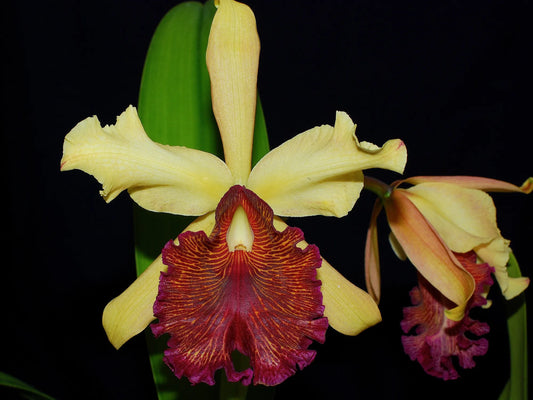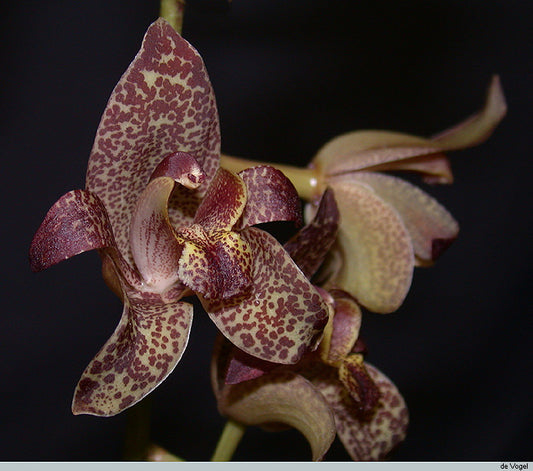Deflasking and Establishing Tissue-Cultured Orchids: A Practical Guide
1. Introduction
Orchid propagation through tissue culture has revolutionised the horticultural industry by enabling large-scale, disease-free, and genetically uniform production. This method involves culturing orchid embryos or meristematic tissue in sterile, nutrient-rich agar medium under controlled laboratory conditions. The resulting plantlets, commonly referred to as protocorms or seedlings, grow within transparent containers known as flasks. Once they reach a suitable size and developmental stage, these seedlings must be deflasked and acclimatised to ambient conditions to continue their growth in natural or semi-natural environments. This process, known as deflasking, is a critical transitional phase that requires careful handling and optimal conditions to ensure high survival and establishment rates.
2. Materials and Equipment
Successful deflasking requires several key materials to facilitate the transition from a sterile to a non-sterile environment while minimising transplant shock. The following materials are recommended:
-
Sterile scissors for cutting and separation
-
Bowls or containers filled with lukewarm, clean water
-
Soft paintbrush or tweezers for agar removal (optional)
-
Seedling trays, community pots, or small individual pots with drainage
-
Suitable potting media such as fine orchid bark mix, sphagnum moss, or seedling-grade mix
-
Fungicide solution (e.g., mancozeb or thiram-based)
-
3% hydrogen peroxide (optional for surface sterilisation)
-
Rooting stimulants (such as Auxinone)
-
A transparent humidity dome to maintain humidity
-
Clean gloves and a sterile workspace
Media selection should consider the specific needs of the orchid genus and local environmental conditions. Sphagnum moss is generally more suitable for cooler or drier conditions, while bark-based mixes offer better aeration for genera such as Cattleya and Dendrobium.
3. Method: Step-by-Step Deflasking Procedure
3.1 Pre-Deflasking Preparation
It is ideal to conduct deflasking during warm, humid periods, as this reduces transplant stress. All tools and containers should be sterilised prior to use to minimise microbial contamination. A shaded, well-ventilated area should be designated for the procedure.
3.2 Removal of Seedlings from Flask
The flask should be carefully broken or opened, and the contents gently poured into a bowl of lukewarm water. The seedlings should be gently agitated to loosen and dissolve the agar medium. Manual removal of residual agar using a soft brush or fingers is recommended. Any attached agar should be completely removed to prevent fungal or bacterial growth.
3.3 Cleaning and Sanitising
Following agar removal, the seedlings should be rinsed multiple times in clean water. Subsequently, seedlings may be soaked for 30 minutes in a diluted solution of Auxinone (1ml/L of water) to promote root development and reduce transplant shock.
3.4 Fungicidal Treatment
To prevent fungal infection during the vulnerable acclimatisation period, seedlings should be immersed in a mild fungicide solution according to manufacturer instructions. After treatment, seedlings should be allowed to air-dry slightly on a clean paper towel to remove excess moisture.
3.5 Planting and Humidity Management
Seedlings can be planted in groups of 5–10 per community pot or individually, depending on size and species. Care should be taken to ensure that the roots are in contact with the potting medium while avoiding burial of the crown or leaves, which may cause rot. A high-humidity environment should be maintained initially using a plastic dome to mimic the conditions within the flask. Light should be bright but filtered, avoiding direct sunlight that may cause desiccation.
4. Post-Deflasking Care and Cultivation
4.1 Weeks 1–4: Acclimatisation Phase
During the first four weeks, seedlings should be kept under high humidity (approximately 80–90%) and monitored daily. Light misting may be applied to maintain moisture, but watering should be minimal to avoid rot. The humidity cover should be removed for short intervals daily to encourage air exchange and gradual hardening. Furthermore, it is crucial that the temperature be maintained between 18 to 25 degrees celsius.
4.2 Months 2–6: Early Growth Phase
Once new roots or leaves emerge, seedlings are considered successfully acclimatised. Humidity can be gradually reduced, and the frequency of misting decreased. A balanced, diluted orchid fertiliser (e.g., 20-20-20 at one-quarter strength) may be introduced every 2–3 weeks. Watering should occur when the medium is nearly dry, with caution to avoid overwatering. Light levels may be slightly increased at this stage.
4.3 Months 6–12: Establishment Phase
During this period, seedlings should begin to show consistent vegetative growth. If root systems become dense or space is limited, repotting into larger containers is advised. Environmental conditions should be adjusted to mirror those suitable for mature orchids of the respective genus. Fertilisation may be increased to fortnightly intervals using a balanced fertiliser. Airflow and light intensity can be further optimised to promote robust growth.
5. Common Challenges and Solutions
Several issues may arise during and after the deflasking process. Yellowing leaves typically indicate overwatering or overexposure to light and can be remedied by improving drainage and adjusting light exposure. Rot is a common concern, often resulting from excessive humidity or poor airflow, and can be mitigated by reducing watering and using more aerated media. Lack of growth after two months may reflect poor root establishment or suboptimal temperature and should prompt reassessment of growing conditions.
6. Conclusion
Deflasking is a delicate yet essential stage in orchid cultivation that bridges laboratory propagation and greenhouse or domestic growth. By adhering to meticulous hygiene, appropriate environmental conditions, and gradual acclimatisation, growers can maximise survival rates and promote healthy development in tissue-cultured orchid seedlings. With consistent care over the subsequent 6–12 months, these young orchids can mature into thriving specimens ready for long-term cultivation and eventual flowering.








